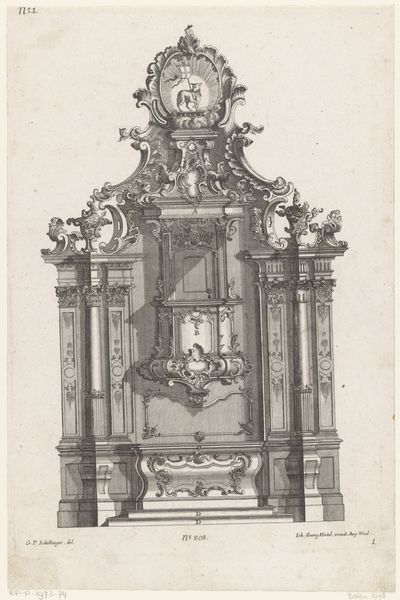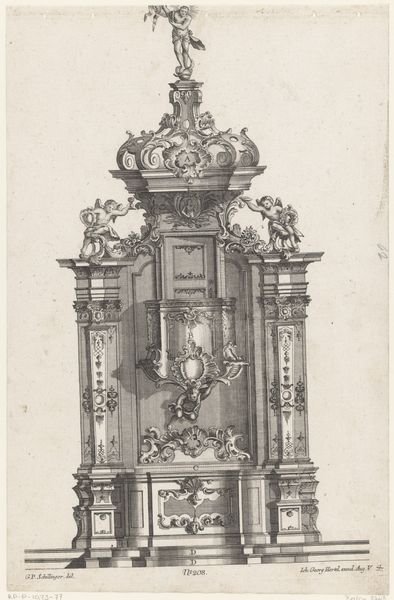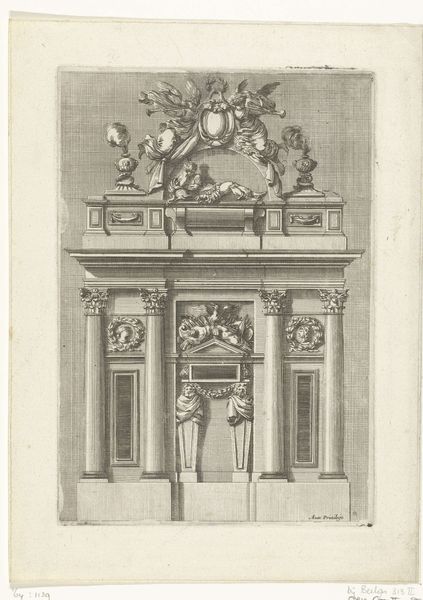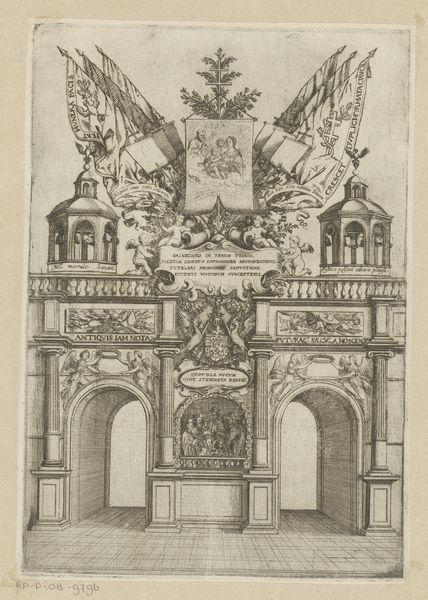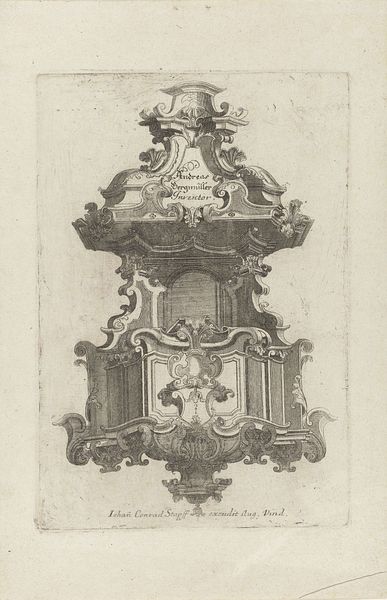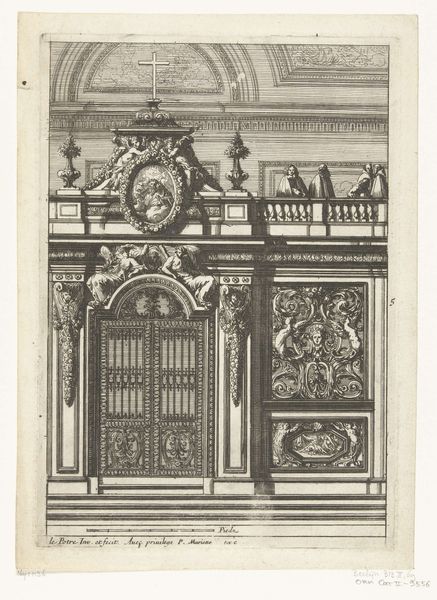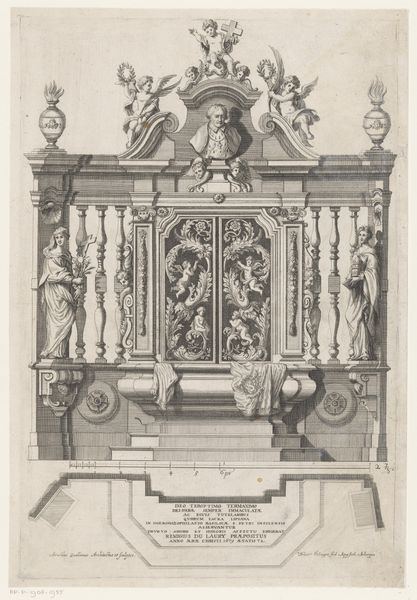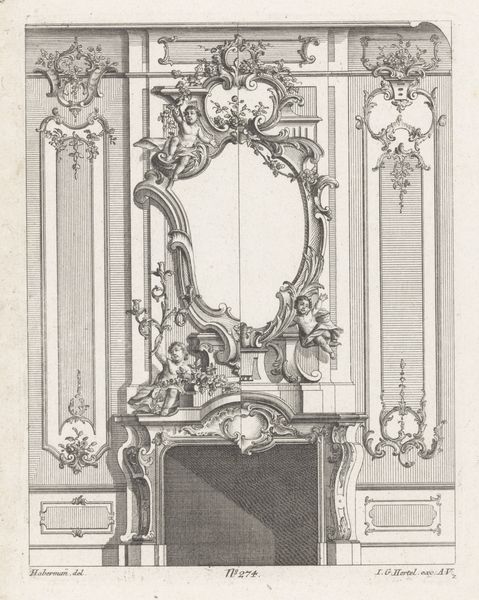
drawing, print, engraving, architecture
#
architectural sketch
#
drawing
#
baroque
# print
#
pencil sketch
#
old engraving style
#
geometric
#
engraving
#
architecture
Dimensions: height 328 mm, width 213 mm
Copyright: Rijks Museum: Open Domain
Curator: What an elaborate design! This drawing presents a "Kanselaltaar met IHS in stralenkrans," a pulpit altar with the IHS Christogram within a halo. It's currently held at the Rijksmuseum. Dating from somewhere between 1705 and 1775, this anonymous engraving shows a remarkable Baroque architectural element. Editor: My first impression is… overwhelming! There’s so much intricate detail. The composition seems very vertical and emphasizes this kind of top-heavy grandeur, it would make any preacher feel like an imperial representative of God or some earthly king! It strikes me as rather didactic and severe in its ambition. Curator: Well, consider the period! The Baroque style often utilized these dramatic displays. It speaks to the culture's desire to impress, even overwhelm, the viewer with a show of faith and power, something it would literally enforce when dealing with non-believers. How do you think its function as both a pulpit and an altar affects its symbolism and purpose? Editor: By fusing these two key functions, it suggests an ambition to consolidate religious authority within a single point, one single unified sacred locus, I assume it was aimed at emphasizing top-down, authoritarian religious structures. I am sure these altars served specific, socially manipulative purposes that are easy to overlook. I’d be curious to examine the material costs and craftsmanship. Who made this, what skills did they have and how does this tell a story about artisan work practices? The production tells its own, less overtly glorious, story. Curator: It is easy to overlook that for every flourish here on display, there were hundreds of painstaking hours of unpaid, or poorly paid labour involved in its conception, production, distribution, installation, use, maintenance, policing of access and eventually dismantling! Editor: Precisely. That contrast – the dazzling visual statement versus the hard, material realities of its making – to me that tension is the core of what art like this reveals. It’s a testament to the ability of human beings to produce impressive art under socially damaging conditions, though obviously such conditions also find their way into that art's narrative as well! Curator: Absolutely, a vital historical understanding, offering insights into both cultural ambitions and social structures. Editor: Thanks, so much more to consider about what might otherwise be considered nothing but a beautiful but antiquated piece.
Comments
No comments
Be the first to comment and join the conversation on the ultimate creative platform.
